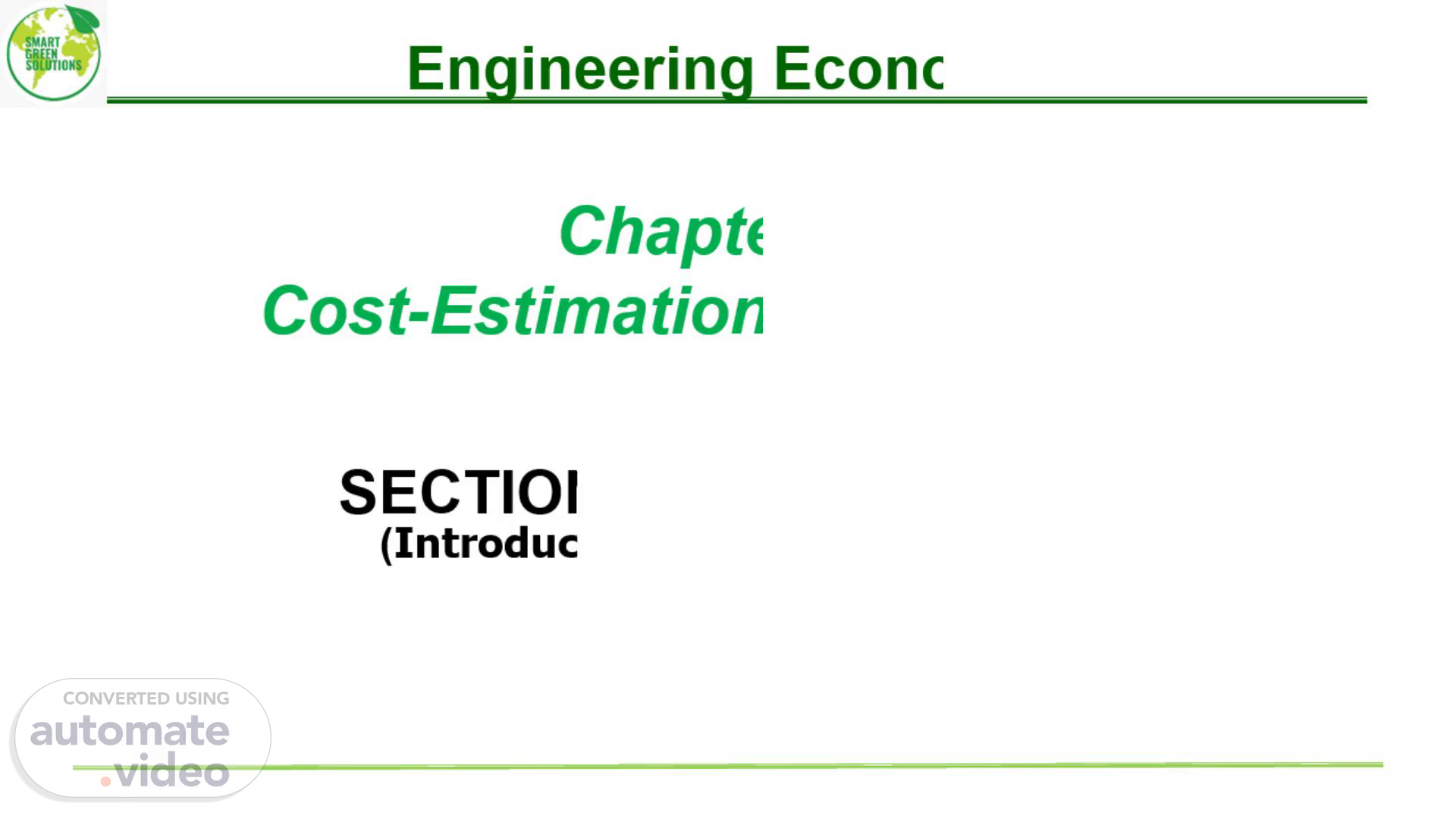Scene 1 (0s)
Engineering Economy. Chapter 3 Cost-Estimation Techniques.
Scene 2 (7s)
In Chapter 1, we defined seven steps for the Engineering Economic Analysis Procedure. (Table 1-1; page 7). In Chapter 2, we studied various Cost Concepts. Now we will use these concepts to carry out Cost Estimation. In Chapter 3 we will be addressing Step 3 of the seven steps; the development of the outcomes and cash flows for each alternative..
Scene 3 (27s)
Introduction. Engineering economy studies deal with outcomes that extend into the future, estimating the future cash flows for feasible alternatives is a critical step in the analysis procedure. We will, therefore, also study how to project the current estimates to future cash flows..
Scene 4 (43s)
Cost-Estimation. Generally, Cost-Estimation is the most difficult, expensive, and time-consuming part of an engineering economy study. It includes estimation of: Costs (cash-outflows) Revenues (cash-inflows) Useful lives Residual values Any other data which maybe pertinent to a specific project.
Scene 5 (0s)
Cost-Estimation. A decision based on the analysis is economically sound only as much as the cost and revenue estimates are representative of what will subsequently occur, i.e. how accurate the estimations are. We will now look at the role of cost estimation in engineering practice..
Scene 6 (1m 16s)
Cost-Estimation. Whenever an engineering economic analysis is performed for a major capital investment, the cost-estimating effort for that analysis should be its integral part. This requires the active participation of: Top management Engineering designers Manufacturing engineers Finance Marketing.
Scene 7 (1m 32s)
Cost-Estimation. Results of cost estimation are used for various purposes, including : Providing information used for establishing both the product cost and the selling price. Determining whether the product can be sold at a profit and what would be the likely level of the Profit (for simplicity, profit = price - cost). Evaluating how much capital can be justified for process changes or other improvements. Establishing benchmarks for productivity improvement programs; i.e. establish a standardized set of metrics against which to judge our performance in relation with that of our successful competitors ..
Scene 8 (1m 58s)
Cost-Estimation Techniques. There are two fundamental approaches to cost estimation: the “top-down” approach and the “bottom-up” approach..
Scene 9 (2m 9s)
Cost-Estimation Techniques. The top-down approach is a much simpler and quicker method and it basically uses historical data from similar past engineering projects to estimate the costs and revenues, for the current project/alternatives. This is done by modifying data from previous projects for changes in: inflation or deflation activity level energy consumption weight, size etc. This approach is best used early in the estimating process when alternatives are still being developed and refined..
Scene 10 (2m 32s)
Cost-Estimation Techniques. The bottom-up approach is a more detailed method of cost estimation. This method breaks down a project into small, manageable units and estimates their economic consequences. These smaller unit costs are added together with other types of costs to obtain an overall cost estimate. This approach usually works best in later part of planning when the detail concerning the desired output (a product or a service) have already been defined and clarified..
Scene 11 (2m 53s)
MCQs. You are now required to attempt some simple multiple-choice questions. If you, Otherwise, achieve at least 60% marks in the MCQs, it will mean that you have grasped the bare minimum knowledge required. In that case, you can move ahead. Otherwise, you would be required to repeat the earlier slides..
Scene 12 (3m 12s)
End of Section 1 – Activity 1(A). 12. 2025. Engineering Economy : Chapter 3.
